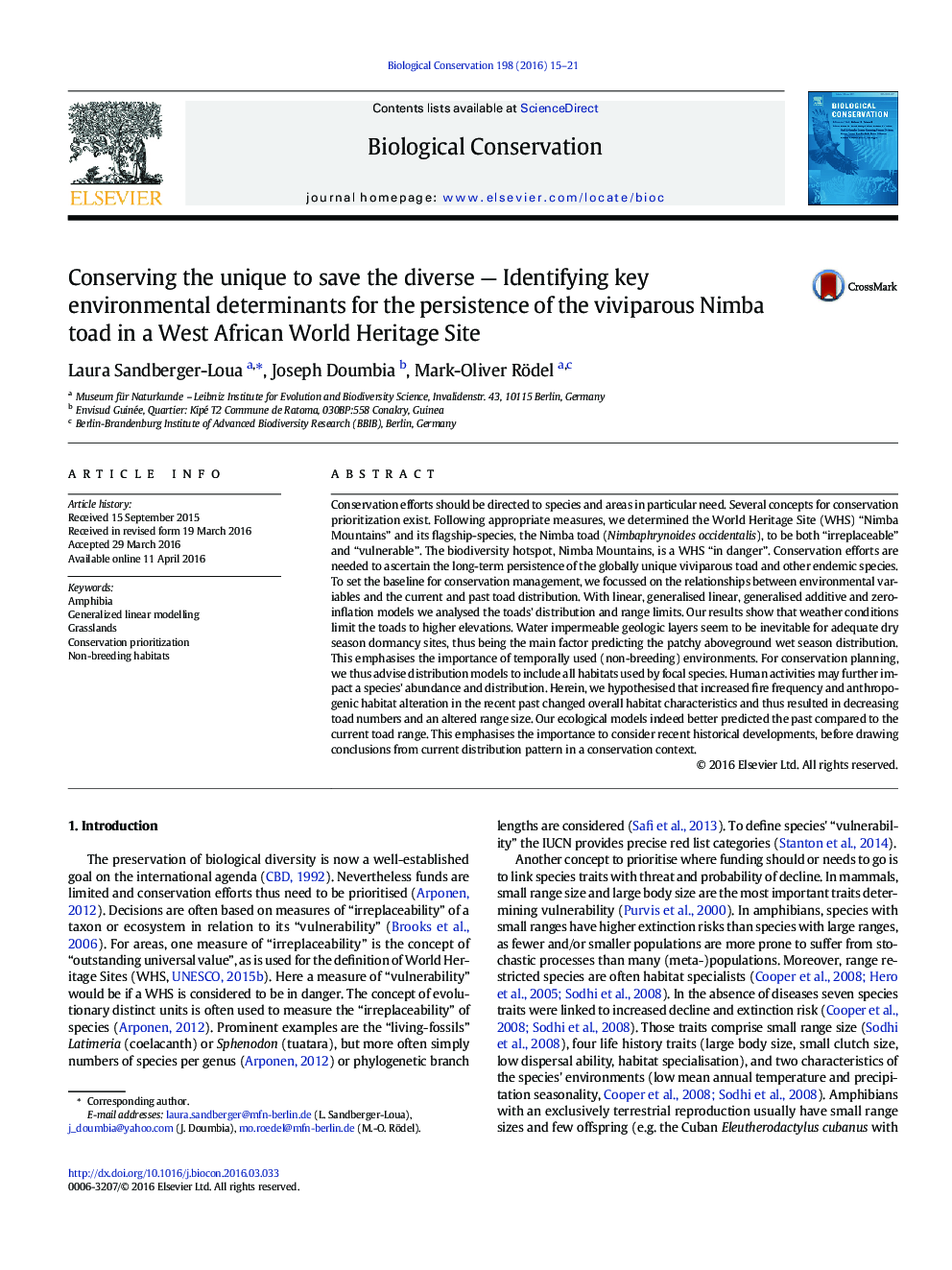| کد مقاله | کد نشریه | سال انتشار | مقاله انگلیسی | نسخه تمام متن |
|---|---|---|---|---|
| 4385013 | 1617903 | 2016 | 7 صفحه PDF | دانلود رایگان |
• Habitat requirements of a WHS's flagship species, the Nimba toad, are investigated.
• Habitat models predict better past than recent toads' abundances and distribution.
• Humid dry season dormancies are most crucial for surface wet season distribution.
• These likely apply as well to many other endemic taxa of the Nimba Mountains.
• Conservation should consider past disturbances and all habitats used by a species.
Conservation efforts should be directed to species and areas in particular need. Several concepts for conservation prioritization exist. Following appropriate measures, we determined the World Heritage Site (WHS) “Nimba Mountains” and its flagship-species, the Nimba toad (Nimbaphrynoides occidentalis), to be both “irreplaceable” and “vulnerable”. The biodiversity hotspot, Nimba Mountains, is a WHS “in danger”. Conservation efforts are needed to ascertain the long-term persistence of the globally unique viviparous toad and other endemic species. To set the baseline for conservation management, we focussed on the relationships between environmental variables and the current and past toad distribution. With linear, generalised linear, generalised additive and zero-inflation models we analysed the toads' distribution and range limits. Our results show that weather conditions limit the toads to higher elevations. Water impermeable geologic layers seem to be inevitable for adequate dry season dormancy sites, thus being the main factor predicting the patchy aboveground wet season distribution. This emphasises the importance of temporally used (non-breeding) environments. For conservation planning, we thus advise distribution models to include all habitats used by focal species. Human activities may further impact a species' abundance and distribution. Herein, we hypothesised that increased fire frequency and anthropogenic habitat alteration in the recent past changed overall habitat characteristics and thus resulted in decreasing toad numbers and an altered range size. Our ecological models indeed better predicted the past compared to the current toad range. This emphasises the importance to consider recent historical developments, before drawing conclusions from current distribution pattern in a conservation context.
Journal: Biological Conservation - Volume 198, June 2016, Pages 15–21
